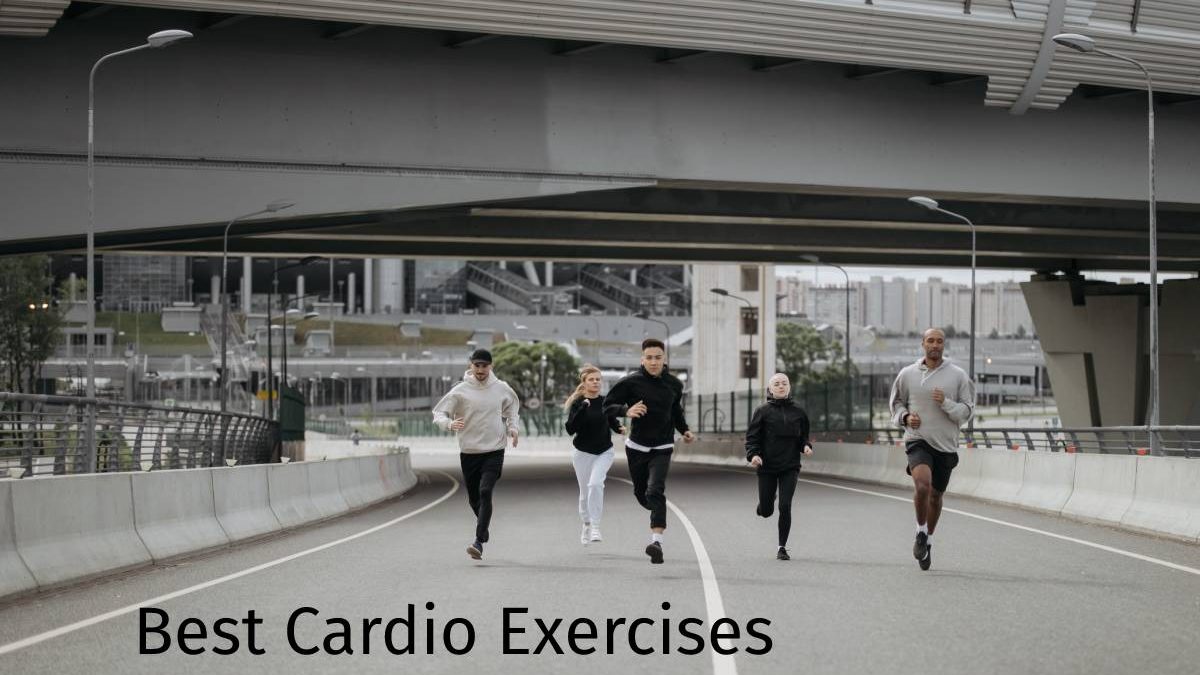Table of Contents
Introduction
Best Cardio training is an exercise of increased intensity that improves overall endurance and fitness of the body. As the name implies, they aim to develop and strengthen the heart muscle. It is enough to train for 20-40 minutes 1-2 times a week to achieve this effect.
Cardiovascular exercises, also known as cardio, are pivotal in maintaining overall health and fitness—running tops the list, offering a high-impact, full-body workout that enhances endurance and cardiovascular efficiency. Cycling outside or on a stationary bike is low-impact and strengthens the heart and lungs. Jumping rope is a versatile and efficient cardio exercise that promotes coordination and agility. Swimming engages multiple muscle groups while being mild on the joints, making it an ideal choice for various fitness levels. High-intensity interval Training (HIIT) includes short bursts of intense activity followed by rest, optimizing calorie burn and cardiovascular health. These exercises improve heart and lung function, boost metabolism, and contribute to weight management. Including various cardio exercises in your routine ensures a well-rounded approach to cardiovascular fitness, promoting a strong and healthy cardiovascular system. Always consult with a healthcare professional before beginning a new exercise program.

How To Determine Your Cardio Heart Rate Zone?
The easiest option is to entrust the calculation to your fitness bracelet. The built-in algorithm calculates the indicators automatically and, as a rule, quite accurately.
You Can Also Use The Karvonen Formula
220 (considered the maximum heart rate per minute) – your age = 100%, where 100% is your maximum heart rate (HR) per minute.
Load Equal To
- 40-50% of this figure is considered low-intensity,
- 50–65(70%) is considered medium intensity,
- 65–80% – cardio zone,
- above 80% – the so-called “red zone” of the pulse, competitive mode at the limit of human capabilities [1, 2].
Important
- Long (more than 1 hour) workouts in the cardio zone of your heart rate can do more harm than good! Keep this in mind when choosing a training mode.
- Before starting a workout, warm up by doing cardio at a low pace for 5-7 minutes.
What Exercises To Choose from?
Bike Riding
When choosing a route for training, remember that this is not a walk but a ride at a high pace. Therefore, a bike path, cycle track, or stadium is more suitable for cardio training.
Important
Before training, check the technical condition of the bike. Take water and a hat with you. Please do not plan to train in places where there are a lot of people: it will be difficult for you to maintain a constant high pace of riding.
Run
Outdoor running pumps various running techniques, saturates the body with oxygen, and makes it possible to admire the landscapes of nearby squares and parks. If there is nothing in the part, go to the stadium. And if it is not observed, run at home! Use running variations in place, and add active arm movements, such as when running fast, swinging your arms above your head, or in front of you. Additional exercises help to achieve the desired intensity.
Important
Be sure to use athletic shoes even for home activities to reduce the danger of falls and wounds. Sneakers should have a high heel and internal arch support and be soft enough for the foot to bend physiologically when landing on the toe.
Nordic Walking (walking with sticks)
This option is more “green” than running since there is less shock load on the joints of the legs and spine. Beginning “Scandinavians” are better off renting sticks: if you like the exercise, you can always get your pair.
Important
Invite a professional instructor to the first lesson: he will explain essential points and technical nuances that are invisible from the outside.
Climbing Stairs
This way of getting a quality cardio load may seem unexpected, but it is logical and straightforward. There are hills and slides in many parks and stairs – at every entrance. To maintain the heart rate at the right level, it is better to rise at a pace of easy running.
The stairs will be replaced at home by a step platform or cabinet. If you use a step platform, diversify the exercises by adding knee flexion, overlapping, and step aerobics elements. Active hand movements are also in place.
Important
Do not use highchairs, office and home chairs instead of steppe: they are too unstable. Instead, it is better to take a curbstone low, up to the knee. Otherwise, the load on the joints and muscles will be too large and the pace too low.
“Jumping Jack”
Under the provocative name, jumps are hidden with the simultaneous spreading of the legs and arms. The exercise is performed as follows: from a standing position, jumping up, spreading your legs shoulder-width apart, or more comprehensive. Similarly, raise your arms above your head through the sides. Next, you can clap your hands. Then, jumping up again, put your feet together (shoulder-width apart), and lower your arms down along the body. The intensity can be adjusted by increasing or decreasing the amplitude of the jump and arm movements.
Important
Try to jump softly, landing on your toes and bending your knees slightly. Keep your arms slightly bent at the elbows – this is their more physiological position. Keep your back straight, and the abdominal muscles should be in good shape; the stomach should be slightly pulled up to the spine. Look ahead, so you don’t lose your balance.
Conclusion
Breathe for an equal number of movements: inhale for two jumps and exhale for two jumps. It will allow you to perform the exercise longer without raising your heart rate too high due to the frequency of inhalations and exhalations.

